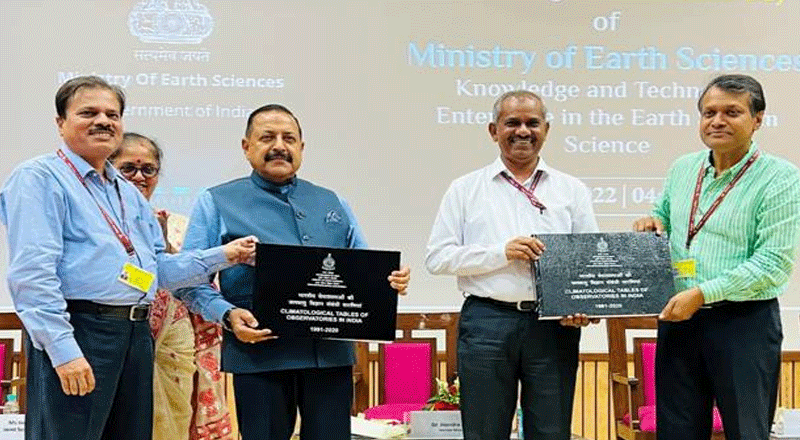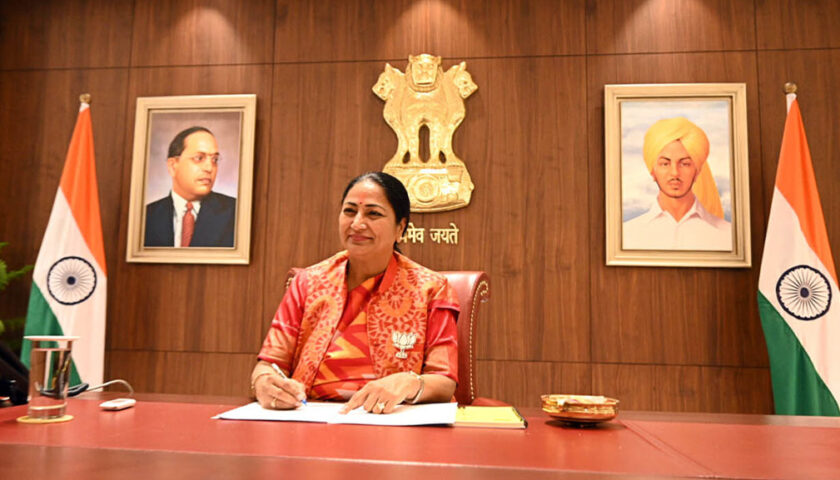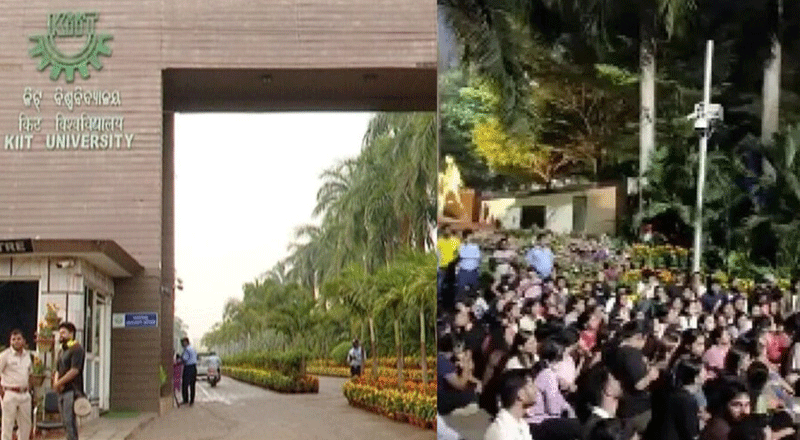Major Achievements during the year 2022
- Six Doppler Weather Radars (DWRs) have been commissioned at Chennai, Leh, Ayanagar (Delhi), Mumbai, Surkanda Devi (Uttarakhand) & Banihal Top (J&K) in 2022, taking the total number of DWRs to 35.
- The annual average cyclone track forecast errors in 2021 have been 60 km, 93 km and 164 km respectively for 24, 48 and 72 hrs against the past five-year average error of 77, 117 and 159 km based on data of 2016-2020.
- There has been 40-50% improvement in Severe Weather (cyclone, heavy rainfall, heat wave, cold wave, thunderstorms, fog) forecast with lead period of five days during last five years.
- The number of Nowcast stations has increased from 1089 (2021) to 1124 (till date in 2022). The number of city forecast stations has increased from 1069 (2021) to 1181 (2022).
- Expansion of South Asia Flash Flood Guidance System (SAFFGS) for providing Flash flood guidance to Bangladesh, Bhutan, India, Nepal and Sri Lanka. SAFFGS, having a high resolution of 4×4 km and covering 30000 watersheds over Indian region is capable of issuing flash flood threat and risk for next 6 and 24 hours respectively.
- A very high-resolution (400 metre) Air Quality Early Warning System (AQEWS) integrated with A Decision Support System (DSS) for air quality has been developed showing an accuracy of 88% for predicting extreme pollution events, which is much higher than the estimates available for a similar system across the globe. This early warning system provides: (1) near real-time observations of air quality and visibility over the Delhi region and details about natural aerosols like dust (from dust storms), fire information, satellite AOD; (2) predictions of air pollutants based on the state-of-the-art atmospheric chemistry transport models; (3) warning messages, alerts, and bulletins; and (4) forecast of the contribution of non-local fire emissions to the air quality in Delhi. The, statutory body, Commission for Air Quality Management (CAQM) in the National Capital Region and the Adjoining Regions, has used AQEWS and DSS extensively.
- Agro-AWS have been installed at newly established 200 DAMUs in KVK premises. Apart from conventional sensors, these AWS are also equipped with soil moisture and soil temperature sensors. Block level agromet advisories issued for about 3126 blocks covering about360 districts of the country.
- The common alert protocol (CAP) was extensively used by State Disaster Management Authorities (SDMAs) in West Bengal, Odisha and Andhra Pradesh to disseminate the cyclone alert messages. A total of more than 6 crore bulk SMS/messages were sent in local languages alerting residents.
- Impact Based Forecasting(IBF) is being issued for all severe weather events at district and city levels with inclusion of exposure and vulnerability parameters and suggested response actions.
- The Atmospheric Research Testbed (ART) facility has been established on the ~100 acres of land at Silkheda village inSehore District of Madhya Pradesh. This facility will study important atmospheric processes particularly: a) Clouds and Convection; b) Land-Atmosphere interactions; c) Aerosol and Radiation; and d) thunderstorms, for developing and testing the parameterization schemes in weather and climate models by implementing advanced measurements of clouds, radiation, precipitation, dynamics and land-surface parameters in the core monsoon zone.
- The NCMRWF Data Assimilation (DA) system makes continuous efforts to include new observations for improving its forecast quality. In this direction, HRPT data from two Indian stations. Integral Precipitable Water (IPW) over Japan, and for the first time satellite observations from commercial satellite operators, viz SPIRE & Geo-Optics (GNSS-RO observations) have been used in assimilation from this year.
- A new merged rainfall product – Multi-Ensemble Rainfall Analysis (MERA) has been developed in research phase. This product has a spatial resolution of 4 km, and temporal resolution is of 1 hour and involves satellite rainfall products from GPM-IMERG, GSMAP, INSAT, and that of from Indian radar network.
- An experimental version of high-resolution global forecast Model (HGFM) with a horizontal resolution of 6 km has been implemented to improve the prediction of smaller-scale weather extremes. A scientific strategy is adopted by using Triangular Cubic Octahedral (Tco) grid which is very scalable After a thorough validation and performance evaluation, the model will be handed over for operational implementation to India Meteorological Department.
- New version of regional Unified Model (RA3) was implemented at 1.5km and 4km resolutions. The upgradation incorporated some new capabilities like improved microphysics with more interactive cloud-aerosol processes and the cloud generation scheme which accounts for improved entrainment at the top of the boundary layer. The lightning parameterization scheme was also re-tuned to improve the coverage and extreme weather signals for enhanced lightning forecast potential over India.
- The Electric-WRF model has been operationally implemented. Presently three different products (Lightning Flash Density, Max Reflectivity and Hourly rainfall) are being generated on an experimental basis for the kind feedback of forecasters.
- INCOIS established three Ground stations to meet the in-house operational advisory services and acquire data from AVHRR (Metop-A, NOAA-18 & NOAA-19), VIIRS (Soumi-NPP), MODIS (AQUA & TERRA) & OCM (Oceansat-2) sensors.
- Autonomous coastal water quality “Coastal Observatories” at off Kochi and Visakhapatnam along the Indian coast was established in May 2022. These observatories were deployed at approximately ~30 m water depth and ~6-8 km from the coast, housing multiple sensors for physical (temperature, salinity, depth, surface current) and water quality (dissolved oxygen, nutrients, chlorophyll, turbidity, pH, pCO2) parameters. Two cruises from West Bengal to Goa were undertaken during February 2022 to April 2022 to assess the coastal water quality.
- As a part of shoreline management study, a total of 526 numbers of shoreline change maps has been generated using the standard protocol (1:25000 scale) for the entire Indian coast. A web-based GIS application was developed as a digital version comprising of all the shoreline change maps for the Indian coast (1990-2018), which will help various coastal agencies/stake holders for better management of the coast. The shoreline change map has been released in two volumes corresponding to the East and West coasts of India. The shoreline change maps for Lakshadweep Islands has also been prepared. In addition, the coastal geomorphology and structures were mapped along with their functional and structural performance for Tamil Nadu, Puducherry, and Kerala coast.
- As part of the Indo-Norwegian Collaborations Marine Spatial Plans are being developed for two pilot areas namely Puducherry and Chennai. A number of stakeholder meeting were held and their requirements were incorporated while developing the knowledge base for MSP for the pilot sites. A framework for integrated, ecosystem-based marine spatial planning in India would be developed which can be replicated in other coastal areas.
- A web GIS based decision support system “Digital Coast – India (D-COIN)” has been developed housing all datasets on coastal and marine pollution, marine litter, shoreline changes, coastal hazards, ecosystems etc generated through various projects of NCCR over the years. This long term spatial database would be an invaluable tool to the coastal administrators for effective decision making.
- Coastal clean-up programs are conducted at regular intervals as a part of the “Clean Seas Program (Swachha Sagar)” to create awareness on marine litter. In the context of “Azadi Ka Amrit Mahotsav”, MoES launched the “Swachh Sagar, Surakshit Sagar” campaign to clean-up India beaches all across India and raise awareness about the importance of a Clean and Safe Sea. A total number of 75 beaches covering the entire Indian coast were identified for creating awareness among the beach visitors, fishing communities, other coastal stake holders and general public on the ill effects of beach litter on the marine environments (Fig.3.11). About 58,100 volunteers participated and collected a total of 64,714 kg marine litter from the coastal areas. The most of the litter collected during this event were of single use plastics such as polyethylene bags, water bottles, and food covers. International Coastal Cleanup 2022, with a theme ‘Swachh Sagar, Surakshit Sagar’ was organised and one such mega event was organised at Juhu Beach, Maharashtra (Fig. 3.12) through MoES participation. A mobile application and digital dashboard named “SS Sagar” was designed and developed. Data on marine litter collected during the beach cleaning event were uploaded that allowed identifying the amount of litter in the different beaches along the Indian coast.
- Under the biodiversity studies, taxonomic information of marine (reef-associated and deep-sea) organisms collected on-board FORV Sagar Sampada within the Indian EEZ yielded five new species of decapod crustaceans (Intesius brevipes, Guyanacaris keralam, Munida samudrika, Paramunida travancorica and Munidopsis bhavasagara), one new species of fish (Himantolophus kalami) and two new species of polyclad flatworms (Pseudoceros bipurpurea, Pseudoceros galaxea) The 42nd Indian Scientific Expedition to Antarctica (ISEA) Launched from Goa, in October 2022 Around 120,000 marine species occurrence records are documented in IndOBIS, which can be accessed through the OBIS portal (https://obis.org/).
- NIOT is establishing six more plants with capacity of 1.5 lakhs per day at Amini, Androth, Chetlat, Kalpeni, Kiltan and Kadamat Islands of UT Lakshadweep is in progress. Kalpeni and Amini Desalination plant (Fig. 3.16) generated fresh water on January 2020 and July 2022, respectively.
- Technology for production of recombinant ectoine from deep sea bacteria for cosmetic applications and bioremediation of petroleum hydrocarbon in marine environment by deep sea microbial consortia were transferred to industry through NRDC.
- A Prototype unit of Indigenously developed Tsunami Bottom Pressure Recorder (BPR) Sagar-Bhoomi was successfully deployed off Chennai on 17th September 2022 and is working satisfactorily.
- The Antarctic Bill was passed by the Parliament on August 01, 2022. The bill was enacted as the Indian Antarctic Act on August 06, 2022. to comply with India’s accession to Antarctic Treaty, the Protocol on Environment Protection (Madrid Protocol) to the Antarctic Treaty and to the Convention on the Conservation of Antarctic Marine Living Resources. The legislation provides framework for the management of Indian activities consistent with its obligations under various instruments of Antarctic Treaty System. It also aims at having India’s own national measures for protecting the Antarctic environment and dependent and associated ecosystem.
- On March 17, 2022, India released its Arctic Policy entitled ‘India and the Arctic: Building a partnership for sustainable development’. The policy charts out the country’s scientific agenda and expanding international cooperation in the North Pole as India has a significant stake in the Arctic.
- Two scientists from the Arctic Division participated in the North Pole Expedition conducted by the Norwegian Polar Institute using a Research vessel “KronPrinsHakoon”. NCPOR team members studied the physical (Figure 4.3) and biological aspects related to sea-ice variabilities, especially, the impact of sea-ice variabilities on the vertical connectivity and assembly mechanism of microbial communities.
- The National Centre for Polar and Ocean Research (NCPOR), under the aegis of the Ministry of Earth Sciences (MoES) organized the SCAR 2022. It was the first time that India hosted SCAR Open Science Conference along with the SCAR Business and Delegates Meetings. In view of the pandemic, the 10thOpen Science Conference (1st-10th August 2022) and SCAR Business Meeting (27th -29th July 2022) were organized online. Hosting of the conference coincided with the celebration of 75 years of India’s Independence – Azadi Ka Amrit Mahotsav.
- Seismic Microzonation initiated by NCS-MoES, deals the study of earthquake hazard and risk reduction measures and provides the deliverables to minimize the loss in terms of lives and property in case of occurrence of an earthquake. Seismic Microzonation studies have already been completed for the cities of Jabalpur, Guwahati, Bengaluru, Sikkim, Ahmedabad, Gandhidham-Kandla, Kolkata and Delhi, and the field studies have almost completed for the 04 Cities -Bhubaneswar, Chennai, Coimbatore and Mangalore, and comprehensive reports are under preparation.
- MoES is setting up a geochronology facility at Inter University Accelerator Centre (IUAC), New Delhi to cater to the need of geoscientists of the country. The geochronology facility has the mandate of developing an internationally-competitive centre for geochronology and isotope geochemistry that will facilitate generation of quality isotopic data for geochronological and isotopic fingerprinting. IUAC will have two major machines, namely, an Accelerator Mass Spectrometry (AMS) and High-Resolution Secondary Ionization Mass Spectrometry (HR-SIMS). HR-SIMS has been recently established and operational at IUAC, New Delhi and will aid scientists to decipher complex growth histories in processes that led to Earth’s crust formation and continental dynamics.
- The Deep Ocean Mission, India’s ambitious plan to explore and harness deep-oceanic resources was launched in June 2021. Under this mission, a manned submersible is being developed to carry 3 people to a depth of 6000 metres in the ocean with suite of scientific sensors and tools. The design of the human crewed manned submersible has been completed and many of the subcomponents have been realized. The crew module for carrying 3 human beings and life support systems were realized and tested up to 500 metres.
- An Integrated Mining System is being developed for mining Polymetallic Nodules from 6000 m depth in the central Indian Ocean. Deep water mining machine, first component of Integrated Mining System, designed for the exploration of the deep sea minerals has been demonstrated at a record depth of 5270 metres in the Central Indian Ocean.
- The International Training Centre for Operational Oceanography (ITCOOcean) conducted 10 training programs, one seminar and a webinar. A total of 532 persons were trained of which 424 (Male: 257, Female: 167) are from India and 108 (Male: 68, Female: 40) are from other countries in Indian Ocean RIM.
- The Development of Skilled Manpower in Earth System Sciences and Climate (DESK) conducted 5 training programs for about 200 scientists.





